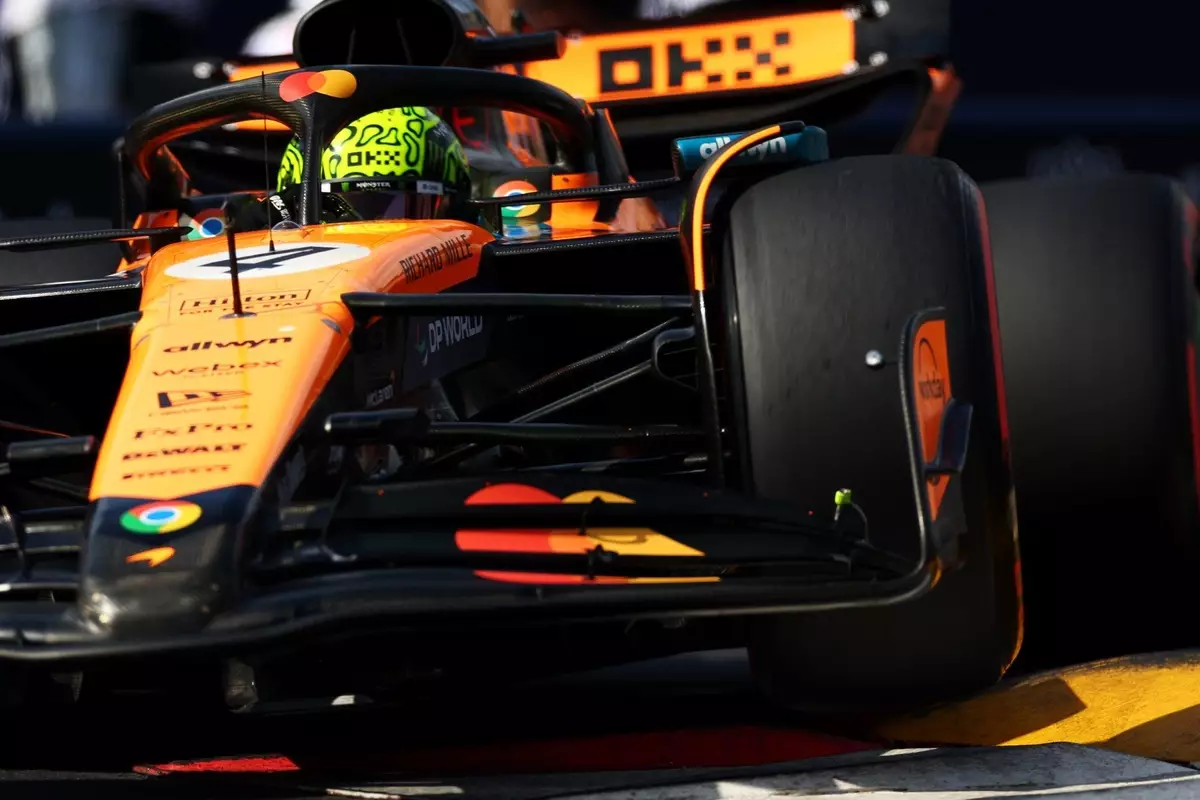In the high-octane world of Formula 1 racing, the synergy between driver and machine is crucial. For McLaren’s young star Lando Norris, achieving the perfect alignment with his car has been a challenging endeavor. However, recent events at the Monaco Grand Prix highlight a pivotal moment in his relationship with the MCL39. After securing pole position—a feat accomplished by narrowly beating Charles Leclerc’s Ferrari—Norris has signaled his return to form. This crucial moment was not just a testament to his skills but also to the tireless efforts of the McLaren team, as both driver and engineering staff navigated through a period of uncertainty.
Andrea Stella, the McLaren team principal, has been vocal about the progress made within the team. It’s evident that there’s an evolving dynamic between Norris and his engineers, leading to tangible improvements in performance. Stella recognized that while Norris has displayed extraordinary talent, the nuance of connecting that talent with the vehicle’s capabilities has been a challenge. This moment of triumph for Norris is described as a vital stepping stone, one that showcases how crucial the combination of driver adaptability and technical innovation can be for achieving success in Formula 1.
The Rebuilding Period: Overcoming Adversity
It’s important to note that Norris’s path to pole position was anything but straightforward. Earlier in the season, he openly confessed to struggling with the MCL39, revealing moments of frustration where he felt disconnected from his car. The subtle intricacies of racing on a challenging circuit like Monaco can magnify these disconnects, as any small misalignment can cost precious time. Stella emphasizes that this recent accomplishment is the outcome of systematic adjustments and insights gleaned from previous races where Norris experienced setbacks.
The engineering team at McLaren conducted a series of in-depth analyses and real-time data evaluations to tackle the emerging issues. As Stella aptly puts it, they explored the “pieces of information” that had been unearthed during their time on the grid, using this knowledge to inform adjustments heading into Monaco. This collaborative approach between Norris and his engineers highlights that Formula 1 success is not merely the result of individual brilliance, but a reflection of a well-oiled team.
Navigating the Pressure of Qualifying
Qualifying in Formula 1 is more than just a race for position; it serves as a critical barometer for the team’s preparedness and the driver’s mental fortitude. Norris’s ability to maintain speed and consistency during Q3—especially after earlier struggles in qualifying—was a mental triumph. It speaks volumes about his resilience under pressure. Throughout the season, he had grappled with the elusive challenge of squeezing out extra tenths of a second when it mattered most, particularly during crucial qualifying sessions. However, his recent performance signals a shift in that narrative.
Stella noted that McLaren, together with Norris, has been in constant evaluation mode, identifying where the braking and handling issues could be refined. It wasn’t just a victory of timing but a well-executed plan to ensure that Norris could harness the car’s full potential. In a sport where milliseconds count, the importance of gaining those additional tenths cannot be understated. The Monaco podium was not merely an accolade but a testament to an evolving strategy, fostering an environment where Norris can thrive.
Looking Ahead: Room for Growth
Even amidst the excitement of achieving pole position, both Stella and Norris are aware that the journey is far from over. McLaren’s potential for further development remains vast, and this notion resonates through their focus on refining the MCL39 to enhance predictability on the limit. The comparison with team-mate Oscar Piastri invites additional dialogue about the trajectory of both drivers. Piastri has demonstrated his own set of challenges, encumbered by issues that periodically hindered his rhythm and pace.
Stella’s optimism about the team’s future trajectory is palpable. He emphasizes that both Norris and Piastri possess untapped potential that, once fully harnessed, could propel McLaren to new heights in the championship standings. The team’s journey continues as they strive for further enhancements, keenly aware that every ounce of optimization could be the key to capturing the coveted championship trophies. The Monaco Grand Prix wasn’t simply a race won; it represented the alignment of skill, teamwork, and technological progress—an inspiring moment that could redefine McLaren’s narrative as they chase success on the racetrack.


Leave a Reply